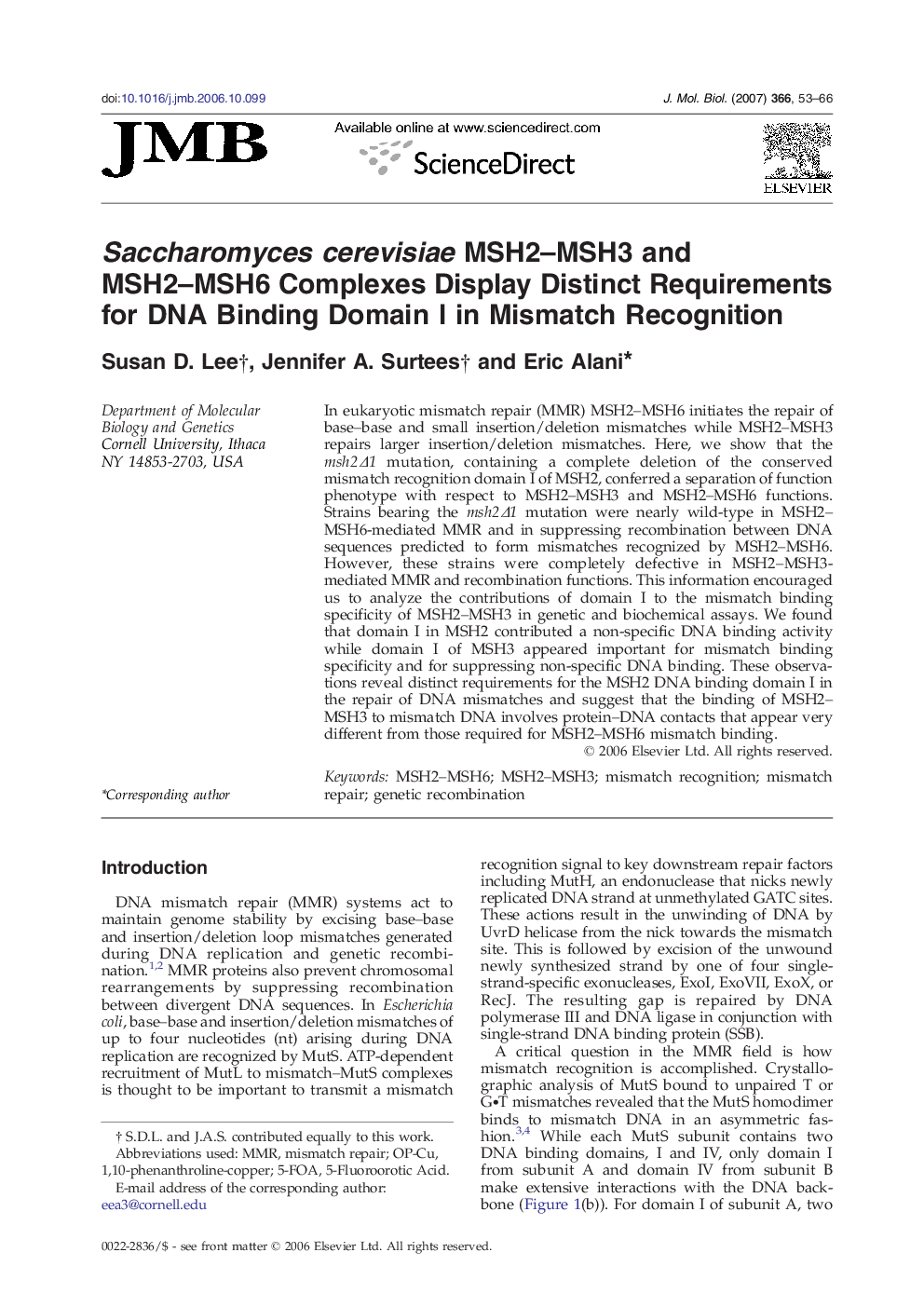| Article ID | Journal | Published Year | Pages | File Type |
|---|---|---|---|---|
| 2188707 | Journal of Molecular Biology | 2007 | 14 Pages |
In eukaryotic mismatch repair (MMR) MSH2–MSH6 initiates the repair of base–base and small insertion/deletion mismatches while MSH2–MSH3 repairs larger insertion/deletion mismatches. Here, we show that the msh2Δ1 mutation, containing a complete deletion of the conserved mismatch recognition domain I of MSH2, conferred a separation of function phenotype with respect to MSH2–MSH3 and MSH2–MSH6 functions. Strains bearing the msh2Δ1 mutation were nearly wild-type in MSH2–MSH6-mediated MMR and in suppressing recombination between DNA sequences predicted to form mismatches recognized by MSH2–MSH6. However, these strains were completely defective in MSH2–MSH3-mediated MMR and recombination functions. This information encouraged us to analyze the contributions of domain I to the mismatch binding specificity of MSH2–MSH3 in genetic and biochemical assays. We found that domain I in MSH2 contributed a non-specific DNA binding activity while domain I of MSH3 appeared important for mismatch binding specificity and for suppressing non-specific DNA binding. These observations reveal distinct requirements for the MSH2 DNA binding domain I in the repair of DNA mismatches and suggest that the binding of MSH2–MSH3 to mismatch DNA involves protein–DNA contacts that appear very different from those required for MSH2–MSH6 mismatch binding.
